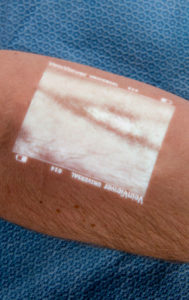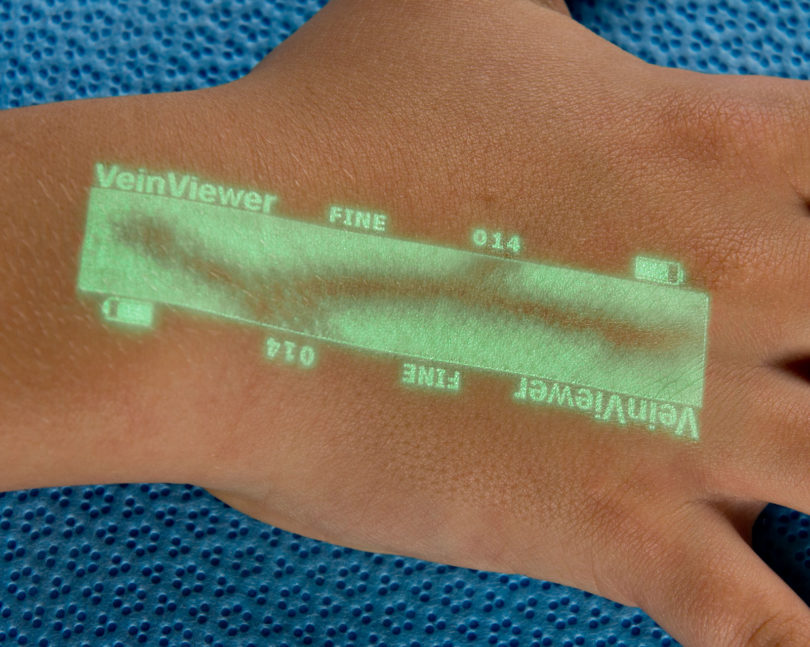Let’s face it, no one likes getting stuck with a needle. And when veins are hard to find, that can mean a lot of sticks and a lot of pain.
That’s where VeinViewer comes in. It’s a vein-finding device that illuminates the veins—basically identifying the vein patterns on a patient’s skin—therefore making IVs and other venipuncture procedures easier.
VeinViewer is one of several products on the market intended to make life easier for patients who are afraid of needles. In the end, it can mean less pain and less anxiety for a patient.

By being able to start an IV with fewer sticks, devices like VeinViewer are greatly beneficial, especially in children’s hospitals. Clinical studies have shown that between 25 and 50 percent of pediatric patients require multiple attempts to start an IV.
“IV starts are one of the most—if not the most—stressful things for a child who is hospitalized,” says Angela Krueger, a nurse at Sanford Children’s Hospital in Sioux Falls, South Dakota. “This technology is a tool we can use to help decrease that trauma while also helping us gain IV access quickly and efficiently.”
VeinViewer works by projecting near-infrared light onto the skin. The light, which is harmless, is absorbed by the blood and reflected by surrounding tissue. VeinViewer then projects a digital image of the patient’s vein pattern. The image shows up in high definition, in real time, by simply holding the hand-held device over the skin. The device can “see” peripheral veins up to 10 millimeters deep and blood patterns up to 15 millimeters deep.
A 2010 study showed that a pediatric surgical unit’s venipuncture first-attempt success rate increased by as much as 80 percent when VeinViewer was used, according to the journal Pediatric Nursing.
Claims Christie Medical Holdings, the Memphis, Tennessee, company that designed VeinViewer: “VeinViewer, as with all medical technology, is intended as a tool to help the clinician maximize their success and efficiencies in the daily procedures for both themselves, and most importantly, their patients.”
Here in Hampton Roads, Sentara hospitals use VeinViewer in medical and surgical units, and anywhere nurses need to establish IV lines in patients, according to Sentara spokesman Dale Gauding.
VeinViewer is used for more than just starting IV lines. It’s been used to locate where cosmetic injections such as Botox should be directed, as well as to help make it easier to draw blood from a blood donor. It can be used no matter the size, age or skin tone of a patient.
Additionally, VeinViewer’s use helps decrease the need for PICC (peripherally inserted central catheter) and central venous catheter lines.
“VeinViewer not only allows physicians better visibility of veins targeted for treatment, but also provides verification of full and complete treatment,” says Dr. Steve Elias, a vascular surgeon and director of the Center for Vein Disease at Englewood Hospital and Medical Center in New Jersey, in testimony provided on VeinViewer’s website. “VeinViewer fulfills a basic surgical principle—if I can see it, I can do it.”



